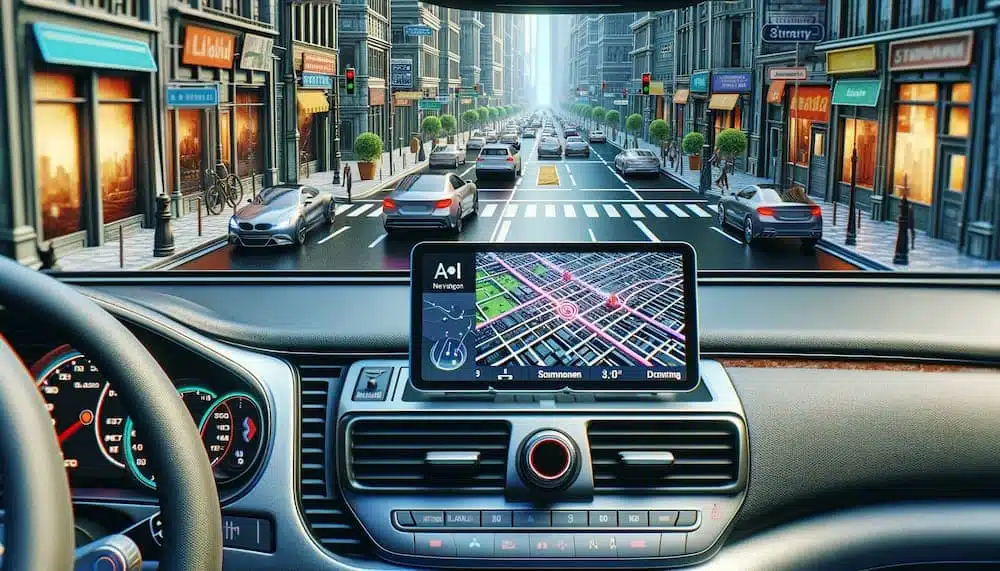Artificial intelligence, driven by machine learning and deep learning, has become a cornerstone of innovation across various industries. Ground transportation systems, for example, rely on predictive algorithms to optimize traffic, forecast congestion, and improve fuel efficiency. Now, these advancements are being applied to the skies, setting new standards for aerial navigation.
AI navigation is pushing the boundaries of aeronautics, moving from experimental stages to real-world applications that promise enhanced reliability, safety, and efficiency.
AI Navigation for UAVs in GPS-Denied Areas
Unmanned Aerial Vehicles (UAVs) typically depend on GPS signals for navigation, but these signals can become unreliable or unavailable in certain situations, such as during natural disasters or in conflict zones. Bavovna.ai, a company that emerged from the US Air Force Labs Mass Challenge acceleration program, is addressing this challenge by developing an AI-driven Positioning, Navigation, and Timing (PNT) system for UAVs, as well as surface and subsurface vehicles.
This innovative system combines sensor fusion with pre-trained machine learning and deep learning algorithms to enable autonomous operations even without GPS. Designed to withstand electromagnetic warfare, the system features hardened core electronics, making it both robust and lightweight—ideal for use in various UAV models, including Class II aerial vehicles.
In trials, the Aurelia X6 Max multicopter successfully flew autonomously, navigating without remote control, GPS, or any other communication system. It collected location data and returned to its home base, demonstrating a positioning error margin of just 0.5% over journeys as long as 30 miles (48 km). Bavovna.ai continues to expand the system’s capabilities to include applications such as signals intelligence, mine detection, automatic target engagement, and security surveillance.
AI Co-Pilots Enhancing Safety in Commercial Aviation
Modern aircraft are equipped with complex autopilot systems designed to assist pilots with altitude, course, thrust, and navigation control. However, these systems often generate a barrage of alerts and interface demands that can overwhelm pilots. NASA has identified up to 34 distinct tasks that can distract or occupy pilots, from communication tasks to searching for VMC traffic, potentially leading to errors with serious consequences.
The Air-Guardian project, spearheaded by MIT’s Computer Science and Artificial Intelligence Laboratory (CSAIL), seeks to improve the human-machine interface (HMI) of current autopilot systems to ensure safer operations. The AI system utilizes eye-tracking technology to monitor pilot focus and employs “saliency maps” to assess aircraft behavior.
Using a continuous-depth neural network model, the system can detect early signs of potential risks and automatically take over control when necessary. In testing, the Air-Guardian system has proven effective in reducing flight risks and enhancing navigational outcomes.
AI Navigation Enhanced Air Traffic Management to Reduce Congestion
Air traffic congestion, often caused by unexpected events like severe weather, can lead to significant delays across the entire airspace network. These disruptions not only affect individual flights but can also create a domino effect, leading to widespread delays.
The ASTRA project, a European Union co-funded initiative led by the Universita Ta Malta, is tackling this issue by developing an AI-based system for tactical prediction and resolution of air traffic hotspots. The project aims to predict congestion in air traffic management sectors up to an hour in advance and provide optimal resolution strategies to air traffic controllers.
By training its prediction algorithm on historical data from 2019 onwards, sourced from the EUROCONTROL organization, the ASTRA project aims to offer prescriptive scenarios for Flow Management Positions (FMPs). These scenarios will help optimize air traffic flow, ensuring safer, more efficient operations with reduced fuel consumption and minimal environmental impact.
AI’s role in aerial navigation is only beginning to unfold, and we can expect to see even more groundbreaking developments in sensor fusion, AI-driven PNT systems, and air traffic management in the years to come.





